Sixty Seconds for Social (Overtime): The Same Old (Instagram) Story?
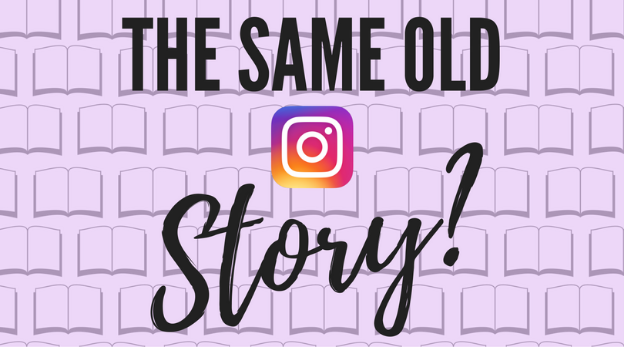
Posted By Stephanie Malkus on August 12, 2016
Temporary photos, customizable with doodling features, that vanish after 24 hours. Sound familiar? Instagram is trying to beat Snapchat at its own game with the introduction of Instagram Stories, a feature almost identical to Snapchat Stories. The initial launch was met with vocal disapproval from Snapchat users, calling it out as a copycat move, but the tides are quickly turning as brands are realizing the potential Instagram Stories have that Snapchat stories don’t. Here’s our rundown of the ins and outs (and ups and downs) of Instagram’s newest feature:
The Basics
Instagram Stories is the place for short pieces of content that aren’t meant to be a permanent fixture on your profile. This makes it particularly ideal for live and spur-of-the-moment content. As is the case on Snapchat, shares can be images and videos (10 seconds max) and all content is only viewable for 24 hours (unless you save and post the photo to your profile permanently...another perk of Instagram). Instagram stories are meant to add a more real, in-the-moment feel to your content and if used well, they can do exactly that.
Instagram’s Edge
Despite Instagram’s criticisms for lack of originality with this new feature, the platform actually made a smart move capitalizing on Snapchat’s weak spots. While Snapchat has the rapidly-growing millennial audience on its side along with its wildly successful branded filters, Instagram Stories are a much better option for brands or businesses with large Instagram followings.
One of the areas in which Snapchat is weakest is searchability on the platform. Finding other users on Snapchat can quickly become very complicated. You can only follow a brand by searching them directly, or if a friend shares their profile. That means you either need to know the exact username or find its Snapcode beyond Snapchat. (Like we said, it’s complicated.) Instagram not only has a much more user friendly search feature, it also recommends other brands to follow, making it far easier to grow your follower base.
And the results are already in; brands are achieving thousands more views than they ever did on its Snapchat stories. Now, this is not to say that Snapchat Stories are going to become a thing of the past. Snapchat has a loyal userbase that we’re sure won’t budge. But for brands trying to reach a larger, broader audience, Instagram Stories might be the tool to try.
How Brands Are Using It
Brands aren’t using Instagram stories much differently than they use Snapchat stories, which isn’t surprising considering that they’re essentially the same. Some of the most frequent kinds of Snapchat content have already made their debut on Instagram:
Sharing VIP Moments
Nike's Jordan account (@jumpman23) used its massive Instagram following to reveal the new design of the Michigan football jerseys, a smart tactic for brands to give their audience members the exclusive, VIP feeling.
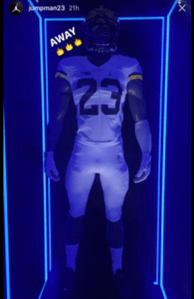
Demoing Products
Demonstrations are also prime content for this style of sharing, and TechCrunch has taken advantage of that with its Instagram Story product tutorials.

Showing Thought Leadership
Cisco’s “trash talking” waste management Instagram Story is another great example of using short pieces of content to explain the bigger picture.
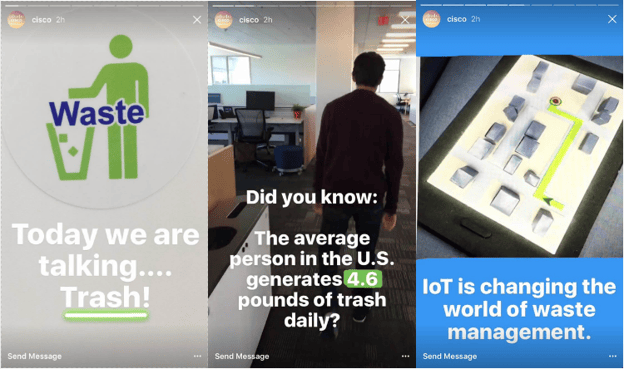
Behind the Scenes Footage
Behind the scenes footage has been popular content for Snapchat stories, so it’s no surprise that it’s made its way into Instagram so quickly. The @NBCOlympics account has been taking full advantage of this with its content, and have even added an element by using its large audience to promote Ryan Seacrest’s Olympics Facebook Live Video.
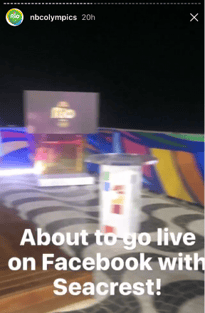
Directing Followers to Other Content
General Electric made use of the dual audience tactic (and content repurposing) by posting snippets of its Snapchat series about Nicaraguan volcanoes and encouraging people to add them on Snapchat to see the rest.

Extend the Reach of Strong Content
Even the U.S. Department of Energy is getting in on the Instagram Story action with a series of facts and responses to the popular new TV series, Stranger Things (a great tactic for engaging and possibly expanding your audience).

Diving In
For those who haven’t yet used the tool, you can find Stories at the top of the Instagram homepage. Stories from accounts you follow are displayed across the top of the feed, as small circular icons with the user’s profile picture. Stories can also be accessed from the user’s profile by tapping their profile image. Tapping on the circled plus sign in the top left corner will get you started creating an Instagram Story of your very own.
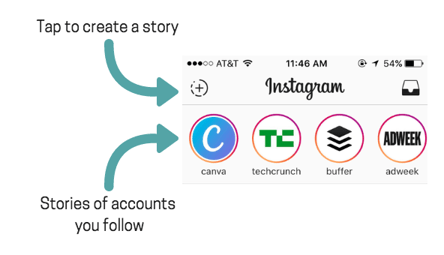
From here, the camera will open for you to take photos or videos (tap the button for a photo, hold it down for video) to then post to your Story. But before you do, there are some decorative features (not as many as Snapchat offers) for your content creation needs. Add a caption, an explanatory diagram/doodle, or even some creative spark before you share.

From here, you can save your story to your camera roll to share on other social media platforms if you so desire, or simply press the checkmark and your photo or video will live in your Story for the next 24 hours.
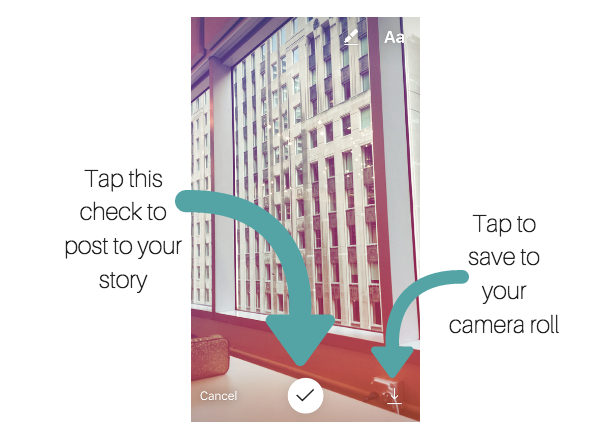
If you don’t decide until after posting that you’d like to save a post, you can still save and/or share your photo (on Instagram) by selecting the ellipses menu at the bottom right corner of your Story post.

When it comes to story browsing, Instagram Stories offer a little more functionality than its Snapchat counterpart. When viewing a story, you can tap on the right side of the screen to go to the next frame, tap left to go back a frame, press and hold to pause, or swipe right or left to move on to the next (or previous) account’s story.
Final Thoughts
While Snapchat certainly shouldn’t be considered down and out, the pressure is on for them to respond with something bigger, better, and more marketer friendly. And despite the initial public response, it appears that Instagram’s version will stick. So if the content fits, Instagram Stories is a great marketing tool that you shouldn’t let pass you by.




